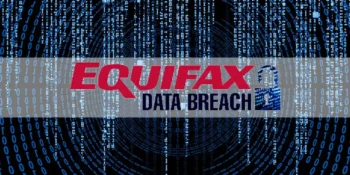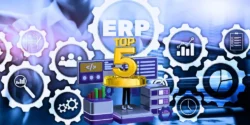In today’s fast-paced digital world, organizations are increasingly reliant on technology to drive growth, streamline operations, and stay competitive. However, procuring the right technology can be a complex and daunting process. A well-crafted technology procurement strategy ensures that your organization acquires the right tools at the right price while aligning with your business goals. This guide will walk you through the steps to develop an effective technology procurement strategy that maximizes value, mitigates risks, and supports your organization’s long-term success.
Understanding the Importance of Technology Procurement
Effective technology procurement is more than just purchasing software or hardware; it’s about making strategic decisions aligning with your organization’s objectives. Understanding the importance of this process sets the stage for developing a robust strategy.
Aligning Procurement with Business Goals
- Strategic Alignment: Ensure that technology procurement aligns with your organization’s objectives. It means understanding the core needs of your business units and ensuring that every technology purchase supports your long-term goals, whether improving efficiency, enhancing customer experience, or driving innovation.
- Stakeholder Involvement: Involve key stakeholders from different departments in the procurement process. Their input helps identify various teams’ specific needs and challenges, ensuring that the procured technology addresses real business problems rather than just adding more tools to the tech stack.
- Prioritizing Needs Over Wants: It’s important to differentiate between essential and non-essential needs. Focus on procuring technology directly contributing to business outcomes rather than investing in trendy solutions that might not deliver real value.
Cost Management and Budgeting
- Total Cost of Ownership (TCO): Look beyond the initial purchase price and consider the total cost of ownership, which includes installation, maintenance, support, training, and potential upgrades. Understanding the full financial impact helps make informed decisions and avoid unforeseen expenses.
- Budget Planning: Establish a clear budget for technology procurement that aligns with your organization’s financial constraints. It includes setting realistic cost expectations and ensuring procurement activities are within the allocated budget.
- Cost-Benefit Analysis: Conduct a cost-benefit analysis to evaluate the financial viability of the technology purchase. Assess whether the expected benefits, such as increased productivity or cost savings, justify the investment.
Identifying and Evaluating Technology Needs
Accurately identifying and evaluating your organization’s technology needs is crucial for effective procurement. It involves conducting a thorough analysis of current systems and future requirements.
Assessing Current Technology Landscape
- Technology Audit: Begin with a comprehensive audit of your current technology assets. Identify what systems are in place, how effectively they are being used, and where gaps or redundancies exist. This assessment helps in understanding what new technologies are truly needed.
- Performance Evaluation: Evaluate the performance of existing technology solutions in meeting current business needs. It includes reviewing user feedback, system performance metrics, and how well the technology integrates with other tools.
- Obsolescence and End-of-Life: Identify technologies that are nearing obsolescence or end-of-life. It will help prioritize replacements and upgrades, ensuring your organization is not reliant on outdated or unsupported tools.
Defining Requirements and Specifications
- Requirement Gathering: Engage with stakeholders to gather detailed requirements for the new technology. It should include functional needs, technical specifications, integration capabilities, and compliance requirements.
- Developing a Specification Document: Create a detailed specification document outlining potential vendors’ requirements. This document serves as a blueprint for your organization’s needs and helps evaluate whether vendors can meet these requirements.
- Prioritizing Features: Not all features are equally important. Prioritize the critical features of your organization’s operations and differentiate between must-haves and nice-to-haves. This approach ensures that the procured technology aligns closely with your core needs.
Selecting the Right Vendors and Solutions
Choosing the right vendors and solutions is critical to a successful technology procurement strategy. It involves researching potential suppliers, evaluating their offerings, and making data-driven decisions.
Vendor Research and Shortlisting
- Market Research: Conduct thorough market research to identify potential vendors with the necessary technology solutions. Consider vendor reputation, market presence, and customer reviews to gauge their reliability and quality.
- Shortlisting Vendors: Based on your requirements and market research, create a shortlist of vendors that best meet your needs. Focus on vendors with a proven track record, offering the required features and fitting within your budget.
- Vendor Qualifications: Assess the qualifications of shortlisted vendors, including their experience in your industry, financial stability, and ability to provide ongoing support. It will ensure you partner with vendors who can deliver and support their solutions over the long term.
Request for Proposal (RFP) and Evaluation
- Creating an RFP: Develop a comprehensive Request for Proposal (RFP) that clearly outlines your requirements, evaluation criteria, and expectations from vendors. The RFP should include details about your organization, the problem you are looking to solve, and any specific terms and conditions.
- Evaluating Proposals: Evaluate vendor proposals based on predefined criteria for cost, functionality, support, and scalability. Use a scoring system to objectively compare proposals and identify the best fit for your needs.
- Vendor Demos and Proof of Concept: Request product demos or conduct a proof of concept (PoC) to see the technology in action. It allows you to test the solution in your environment and verify that it meets your requirements before making a final decision.
Managing Risks and Compliance
An effective technology procurement strategy includes managing risks and ensuring compliance with relevant regulations and standards.
Risk Assessment and Mitigation
- Identifying Risks: Identify potential risks associated with the technology procurement, such as vendor lock-in, data security issues, or implementation challenges. Understanding these risks allows you to develop strategies to mitigate them.
- Risk Mitigation Strategies: Develop risk mitigation strategies, such as negotiating flexible contracts, setting up contingency plans, or choosing vendors with strong service level agreements (SLAs). These strategies help reduce risks’ impact on your organization.
- Continuous Monitoring: Implement continuous monitoring of the procured technology to identify emerging risks early. Regularly review performance metrics and user feedback to ensure the technology continues to meet your needs and expectations.
Ensuring Compliance with Standards and Regulations
- Regulatory Compliance: Ensure that the technology solutions you procure comply with relevant regulations and standards, such as GDPR, HIPAA, or industry-specific guidelines. Non-compliance can result in legal penalties and reputational damage.
- Data Privacy and Security: Verify that the vendor adheres to privacy and security standards, including encryption, data handling, and access control measures. Protecting sensitive data is critical to maintaining trust and meeting regulatory obligations.
- Contractual Compliance Clauses: Include compliance clauses in your contracts with vendors, specifying the standards they must adhere to and outlining the consequences of non-compliance. It provides legal protection and ensures accountability.
Implementing and Managing Procured Technology
Once you’ve selected the right technology, the next step is implementation. Effective management of the procured technology is essential to realizing its full potential.
Planning and Executing Implementation
- Implementation Plan: Develop a detailed implementation plan that outlines the steps, timelines, resources, and responsibilities involved in deploying the new technology. A well-structured plan ensures a smooth rollout and minimizes disruptions.
- Training and Support: Provide training for your staff to ensure they are comfortable using the new technology. Work with the vendor to offer comprehensive training sessions, documentation, and ongoing support.
- Change Management: Implement strategies to help your team adapt to the new technology. It includes communicating the benefits, addressing concerns, and providing ongoing support to encourage adoption.
Monitoring Performance and Making Adjustments
- Performance Metrics: Establish key performance indicators (KPIs) to measure the success of the new technology. Regularly track these metrics to assess whether the technology meets your business objectives.
- Feedback Loop: Create a feedback loop with users to gather insights on their experience with the new technology. Use this feedback to make necessary adjustments and improve the solution’s effectiveness.
- Continuous Improvement: Technology needs can evolve. Continuously review and refine your technology procurement strategy to ensure it remains aligned with your organization’s goals and changing market conditions.
Conclusion
Developing an effective technology procurement strategy is essential for organizations looking to make informed decisions, minimize risks, and maximize the value of their technology investments. By understanding your business needs, thoroughly evaluating potential solutions, managing risks, and effectively implementing new technologies, you can create a procurement strategy that drives success and supports your organization’s growth. Remember, technology procurement aims not just to acquire tools but to empower your organization to achieve its strategic objectives through the right technological investments.










